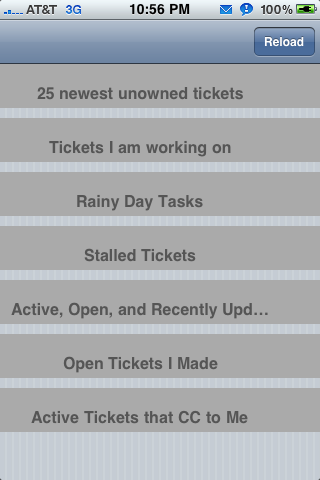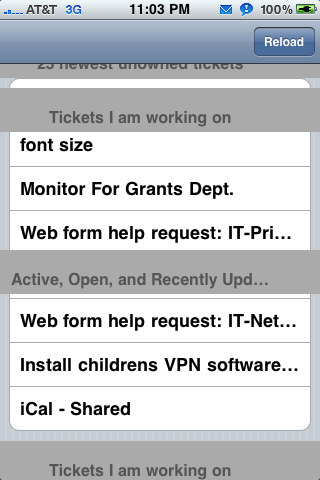I am having trouble animating a custom UITableView section header.
The goal was to create collapsable sections.
When I tap on the custom header the first time it animates as expected, however every time after that it leaves a duplicate in the original location and animates another.
Image Example:
- (UIView *) tableView:(UITableView *)tableView viewForHeaderInSection:(NSInteger)section {
UIView* customView = [[[UIView alloc]initWithFrame:CGRectMake(10.0, 0.0, 300.0, 44.0)]autorelease];
customView.backgroundColor = [UIColor lightGrayColor];
UILabel * headerLabel = [[[UILabel alloc] initWithFrame:CGRectZero] autorelease];
headerLabel.backgroundColor = [UIColor clearColor];
headerLabel.opaque = NO;
headerLabel.textColor = [UIColor darkGrayColor];
headerLabel.font = [UIFont boldSystemFontOfSize:16];
headerLabel.frame = CGRectMake(10, 7, 260.0, 44.0);
headerLabel.textAlignment = UITextAlignmentCenter;
NSDictionary *dictionary = [self.data objectAtIndex:section];
headerLabel.text = [dictionary objectForKey:@"Title"];
[customView addSubview:headerLabel];
// add button to right corner of section
UIButton* headerButton = [[UIButton alloc] initWithFrame:CGRectMake(10, 0, 320, 44)];
headerButton.center = CGPointMake( 160.0, 22.0);
headerButton.backgroundColor = [UIColor clearColor];
headerButton.tag = section;
[headerButton addTarget:self action:@selector(expandSection:) forControlEvents:UIControlEventTouchUpInside];
[customView addSubview:headerButton];
return customView;
}
My Animation Method:
- (void) expandSection:(id)sender {
if (expandedSection == [sender tag]) {
expandedSection = -1;
[self.tableView reloadSections:[NSIndexSet indexSetWithIndex:[sender tag]] withRowAnimation:UITableViewRowAnimationNone];
}else if (expandedSection == -1){
expandedSection = [sender tag];
[self.tableView reloadSections:[NSIndexSet indexSetWithIndex:[sender tag]] withRowAnimation:UITableViewRowAnimationNone];
}else{
[self.tableView beginUpdates];
[self.tableView reloadSections:[NSIndexSet indexSetWithIndex:expandedSection] withRowAnimation:UITableViewRowAnimationNone];
expandedSection = [sender tag];
[self.tableView reloadSections:[NSIndexSet indexSetWithIndex:[sender tag]] withRowAnimation:UITableViewRowAnimationNone];
[self.tableView endUpdates];
}
//[self.tableView reloadData];
}
I am not exactly sure whats going on, but the instances suggest that I need to dealoc something. I've tried a few things but I can't figure this out. Anyone help on this would be great!
Edit: I believe the problem is that reloadSections is causing the custom view to instance. I can't release the view because I need it as a reference to do the update for the animation. Any ideas on what I can do to fix this?



reloadData, it would only animate the deletes, but not animate the inserts. Very strange issue it was. – Blear